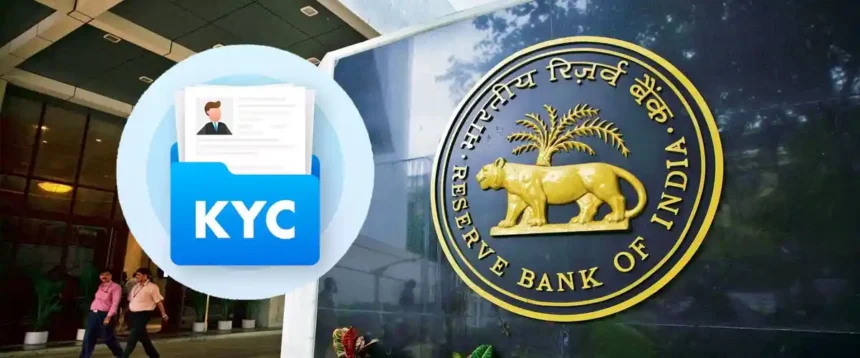Good news for everyone with a bank account! The Reserve Bank of India (RBI) has made some important changes to how banks handle something called KYC. KYC stands for “Know Your Customer.” It’s basically how banks confirm who you are. Before, this process could be a bit of a headache, especially when you had to update your details. But now, the RBI wants to make things much easier for us common people.
So, what’s changed? Well, the RBI has been looking at how banks do KYC, and they saw that a lot of people were having trouble. Sometimes, accounts would even get frozen because someone couldn’t update their KYC in time. This was a big problem, especially for people who get government money directly into their accounts, like under schemes like Jan Dhan Yojana. The RBI wants to fix this and make sure everyone can use their bank accounts without unnecessary fuss.
One of the biggest changes is about how you can update your KYC. Remember how you often had to go to the specific branch where you opened your account? Not anymore! The RBI says you can now update your KYC at any branch of your bank. This is a huge relief, especially for people who might have moved cities or towns. No more traveling just to update some papers.
Ok Another cool change is about what you need to provide. If nothing much has changed in your details, or if only your address is new, you might not need to submit a whole bunch of documents again. The RBI is allowing banks to accept a simple “self-declaration” from you. You can do this through your registered email or mobile number, or even through ATMs and online banking. This means less paperwork and less running around to get documents.
And get this – the RBI is pushing for more digital ways to do KYC. They are allowing things like Aadhaar OTP-based e-KYC and something called V-CIP, which is basically video calls for identity verification. So, you might be able to complete your KYC without even leaving your home! This is super convenient and makes banking more accessible for everyone, especially those in remote areas.
The RBI is also trying to help people in villages and far-off places. They are letting Business Correspondents (BCs) help with KYC updates. These BCs are like local agents who work for banks, often found in smaller shops or outlets in rural areas. Now, they can help customers submit their self-declarations and even assist with biometric Aadhaar-based e-KYC. This means that people who don’t have a bank branch nearby can still get their KYC done easily.
For customers who are considered “low-risk” – meaning your account usually doesn’t have very large or suspicious transactions – the RBI has given even more flexibility. Even if your KYC update is due, your bank is supposed to let you continue with your transactions for a longer time, up to one year from when it was due, or till June 30, 2026, whichever is later. This is a big relief because it means your account won’t get blocked suddenly.
And to make sure you don’t miss your KYC update, the RBI has told banks that they must send you reminders. Not just one, but at least three reminders before your KYC is due. And at least one of these reminders has to be a physical letter, so you don’t miss it in your emails or SMS. This is great because sometimes we forget these things, and getting a clear reminder helps a lot.
The whole idea behind these changes is to make banking easier for everyone. KYC is important because it helps prevent fraud and keeps our financial system safe. But it shouldn’t be a hurdle for people to use their own money or get government benefits. By simplifying these rules, the RBI is trying to balance security with ease of use. It’s a positive step towards making banking more inclusive and less complicated for the common person. Banks have also been asked to take an “empathetic view” when helping customers, especially with old or inactive accounts. They’ve also been encouraged to hold special “KYC camps” in areas where many updates are pending. So, hopefully, we’ll see a lot less stress when it comes to keeping our bank accounts in order.

